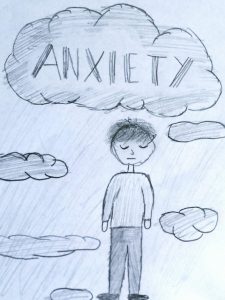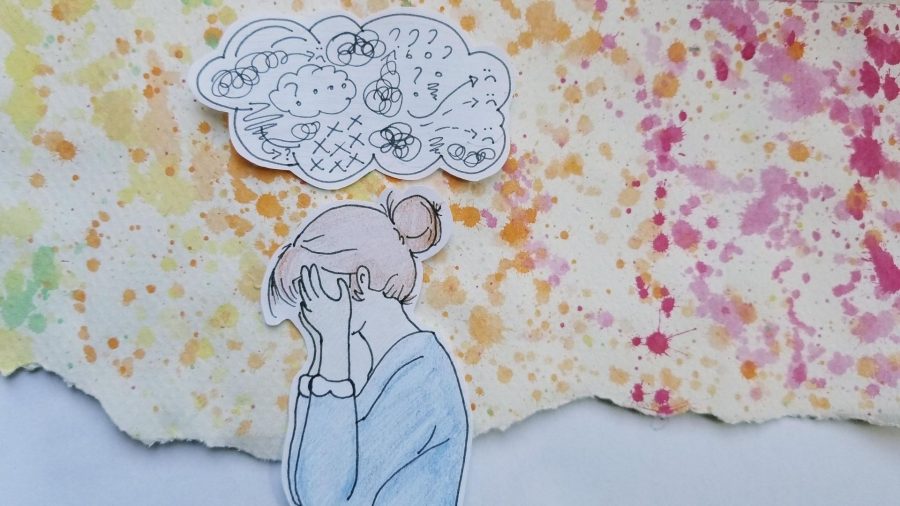Even as a therapist, I get anxious at times, why is that? Because it is natural! Now you may be wondering why? Why is it natural to be feeling anxious? Why am I getting bombarded by negative thoughts when I am anxious? Why don’t I get these negative thoughts at a state of relaxation? Well because these negative thoughts are caused by our brains “Fight or Flight” response. It is our brain’s way of reacting to stress and making us aware and alert of potential danger. Think of it as a caution sign. Many times, before a session, especially with a new client, I get anxious, wondering how I can help them best and give the most qualitative treatment.
When I have ten minutes left for a new session, I get anxious about how I will finish the case notes from the session before! Is this harming me? No, not at all, it’s a quiet alarm that lasts for ten seconds, and then because I have turned it into my motivation, it is encouraging me to solve the problem, make a plan and spur into action. It is natural, we all go through it.
 But if that small alarm turns into a dark cloud that sucks you in, creating physical symptoms, dry mouth, palpitations, drowsiness, shivering, numbing, etc. this slow overwhelming of anxiety is crossing the line and going into the disorder part of anxiety.
But if that small alarm turns into a dark cloud that sucks you in, creating physical symptoms, dry mouth, palpitations, drowsiness, shivering, numbing, etc. this slow overwhelming of anxiety is crossing the line and going into the disorder part of anxiety.
So how can you avoid this cycle?
There are many tools and strategies, here is one of them that I really want to share with you.
ART (Ask, Replace and Turn)
Even the abbreviation sounds nice, doesn’t it? When we think about art, it leads us to creativity and imagination, color, beauty, positive outcomes, happiness, and an expression of feelings. And that is what this tool is all about. So now let me elaborate.
A: ASK
First, you need to ask yourself some questions.
Do I really need this thought? Will I be able to do this? Do I need to ruin my day? Do I need to focus on this now? Is this a need? Do I need to allow myself to get demotivated?
You need to hit your conscious and subconscious mind by exploring the thoughts and emotions that are causing you to worry. This can be done once again by asking questions:
Why am I worried? Do I need to worry?
Remember to ask yourself these questions out loud or write them down. Because when you say aloud from your mouth, your ears are listening, when you write it down you are reading it and you gain more clarity. It’s a whole reflection session, so even if you are asking questions that may be negative, you are taking it all out and so you aren’t going into the negative cycle, rather you are consciously putting efforts to think realistically and rationally.
R: Replace
When we hear the word replace, we have quite a simple concept of it: making something take the place of something else. We do it quite often, replacing the furniture in the living room because it has gotten too shabby, or replacing a word in our report because it doesn’t sound right, or replacing our work area so we can be more productive. And this step is based upon that same concept.
Now take the same questions asked from the step above and replace them with positive thoughts. You will be replacing thoughts of worry with organized thoughts by asking yourself:
Do I have time? When can I fit this extra task into my routine? How can I best reorganize my day? What are the benefits of doing this? Will this help me in the future? Do I need to ask someone for help?
This is more solution-based thinking in which one by one you can replace the negative imagery and worry with positive ideation. While it may seem that this tool is all up in air, it is not. For more scientific proof, you may also read the scientific research paper published by Elsevier about “The power of positive thinking: Pathological worry is reduced by thought replacement in Generalized Anxiety Disorder” (https://www.ncbi.nlm.nih.gov/pmc/articles/PMC4760272/)
T: TURN
Now like any other tool, this is not a magic potion, so by turn, it is not meant that you will be able to turn the situation around, because that is not possible. If you are anxious while standing in front of a large crowd, you will not suddenly disappear. Rather, in this step, you will be turning your perception and focus on your action.
How? By changing the direction of your thoughts from entering the cycle of worry and panic thoughts, you need to point yourself towards a state of calm. You may ask; how do I do that? Do not worry, here are a few tips. Firstly, take a deep breath, then another, and if you can one more. Attend to your breath, by closing your eyes and feeling the refreshment as the air enters your body and a release of your tensions as the air leaves. Many times, people really underestimate the power of taking a deep breath, as you may be right now. Deep breathing, as we are all aware of, increases the supply of oxygen to our brain. What now? Well, this stimulates the parasympathetic nervous system (one part of our nervous system that controls our rest and relax response), which in turn promotes a state of calmness. According to Dr. Tania Elliott of NYU Langone Health to “overcome the unhealthy day-to-day stress response,” you should practice this type of breathing daily, and not just when you are feeling stressed. I tell this to all my clients, so why only try fixing worry thoughts, when we can try to prevent the worry thoughts from going too far in the first place. You may also go to the washroom and drink some water.
Apart from actually using this coping strategy, the main takeaway should be to NEVER suppress your anxiety! Whether you use this tool, other coping strategies, or go seek professional help, the goal should not be to make it go away. Because that is unrealistic and technically dangerous. Rather the goal is to develop mechanisms to handle it, minimize anxiety, cope with it, and get on with life. So that anxiety only serves the purpose of keeping you alert, motivated, and obviously, safe, without it becoming the element that is blocking you from reaching your full potential.

